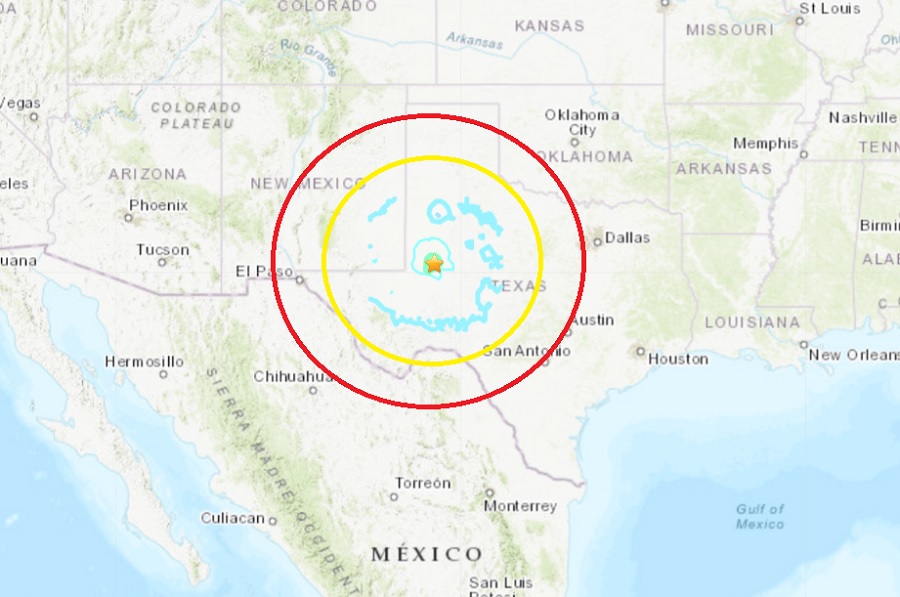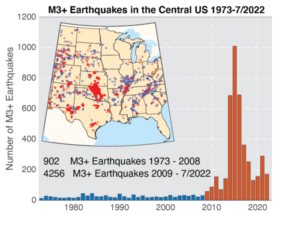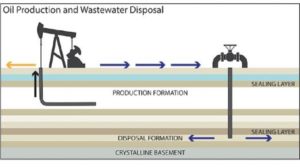
A strong earthquake struck west central Texas today, causing minor damage and driving more than a thousand reports of shaking to the USGS via the “Did you feel it?” web reporting tool. The earthquake was rated as a VII event on a Roman Numeral scale of shaking and damage, where I or 1 is an earthquake not felt to an earthquake of X or 10 is considered an earthquake with extreme shaking and very heavy damage. Also rated as a magnitude 5.4 earthquake, it is tied for the third largest earthquake recorded in Texas –and hits exactly one month after an earthquake of identical magnitude struck near Mentone, roughly 120 miles away from today’s earthquake.

Today’s earthquake struck about 13 miles north-northwest of Midland at a depth of 8.2 km or 5 miles. While there were no reports of injuries, many people took to social media to share photographs of cracks in the walls and ceilings of their homes. The earthquake struck at 5:35 pm local time.
According to USGS, seventeen earthquakes, intensity V or greater, have centered in Texas since 1882, when the first shock was reported. The strongest earthquake, a maximum intensity VIII, was in western Texas in 1931 and was felt over a region twice the size of Texas. Three shocks in the Panhandle region in 1925, 1936, and 1943 were also widely felt.
This area is seismically active, likely due to wastewater injection into deep disposal wells. According to the USGS, there have been 120 quakes of magnitude 2.5 or greater within 30 miles of today’s epicenter since 2018.
The strong earthquake was followed by a weaker aftershock, rated as a 3.3 magnitude event. USGS says it is likely there will be more aftershocks from today’s earthquake in the coming hours and days, although the intensity of subsequent earthquakes should diminish with time.

According to USGS, most earthquakes are not directly caused by fracking, also known as hydraulic fracturing. The recent increase in earthquakes in the central United States is primarily caused by disposal of waste fluids that are a byproduct of oil production. “Wastewater disposal wells typically operate for longer durations and inject much more fluid than is injected during the hydraulic fracturing process, making them more likely to induce earthquakes,” USGS said.
The number of earthquakes in the central U.S. has increased dramatically over the past decade. Between the years 1973–2008, there was an average of 25 earthquakes of magnitude three and larger in the central and eastern United States. Since 2009, at least 58 earthquakes of this size have occurred each year, and at least 100 earthquakes of this size every year since 2013.
USGS says that most wastewater currently disposed of across the nation is generated and produced in the process of oil and gas extraction. Saltwater is produced as a byproduct during the extraction process. This wastewater is found at nearly every oil and gas extraction well. The other main constituent of wastewater is leftover hydraulic fracturing fluid. Once hydraulic fracturing is completed, drilling engineers extract the fluids that are remaining in the well. Some of this recovered hydraulic fracturing fluid is used in subsequent fracking operations, while some of it is disposed of in deep wells.